Susan Silton’s ‘“Mayday! Mayday! Mayday!’ Shines the Light on COVID Victims While Supporting Postal System

Los Angeles artist Susan Silton named her latest project — which memorializes coronavirus victims — after this distress call. A protest as well as a memorial, the campaign works as follows: Participants write down the name of someone who died from COVID-19 and mail it to President Donald Trump.
“If we’re not able to deliver body bags to this president, let’s deliver bags of handwritten names of those we’ve lost,” the project website states.
By mailing in the names of the fallen in a stamped envelope, participants not only send a literal message to the White House but also support the United States Postal Service, a government agency Trump has been accused of undermining as he faces allegations of mishandling the pandemic.
Almost 200,000 Americans have died of coronavirus since the disease began rapidly spreading in the U.S. in March. Two months later, Silton launched her “Mayday!” campaign, but as Black Lives Matter protests erupted nationally after the May 25 police killing of George Floyd in Minneapolis, the artist held off on promoting the project. Now, as Election Day nears and the U.S. Postal Service faces budget cuts and service disruptions, she feels it’s important to declare “Mayday!” over the uncertain fate of this government agency, the casualties of COVID-19 and ongoing police violence.
“‘I can't breathe’ extends from the chokehold to the ventilator,” Silton said. “We're fully in a war, and the casualties are not just the bodies of those who died from COVID-19, or from police brutality or on the streets or in cages. The casualties are facts themselves about all of these realities. It’s a war on facts and reality.”
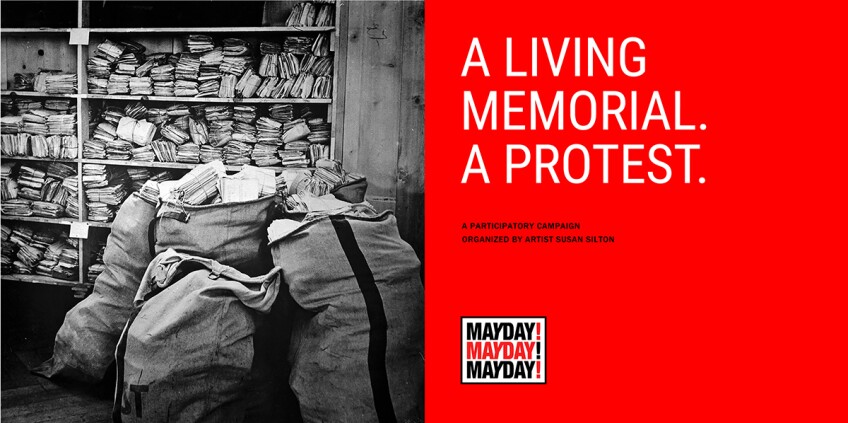
Through the “Mayday!” project, Silton gets to challenge the misinformation coming out of the White House about the pandemic, the Postal Service and other other pressing issues. So far, several hundred people have participated in the campaign.
“Many of those people — I have no idea who they are, so it makes me feel like the project has had some impact,” Silton said. “The [website] interface allows people to record the name that they have originally put on paper and then sent as a letter to the White House. And then it gives them an opportunity to explain who that person is.”
Some participants have a direct connection to the person who's passed away, Silton added, while others submit the names of victims they’ve learned about from the news. Visitors to the “Mayday!” website can click on the names of the individuals memorialized to read more about their lives (though some participants chose not to include additional information about the COVID victims they selected). Silton chose to commemorate the life of Patricia Dowd, the San Jose woman believed to be the first U.S. victim of coronavirus. She died on Feb. 6 from a “burst heart.” The artist also remembered the lives of a group of Detroiters who succumbed to coronavirus; Detroit was one of the first U.S. cities hit hard by the virus.
Click through to see some contributions:
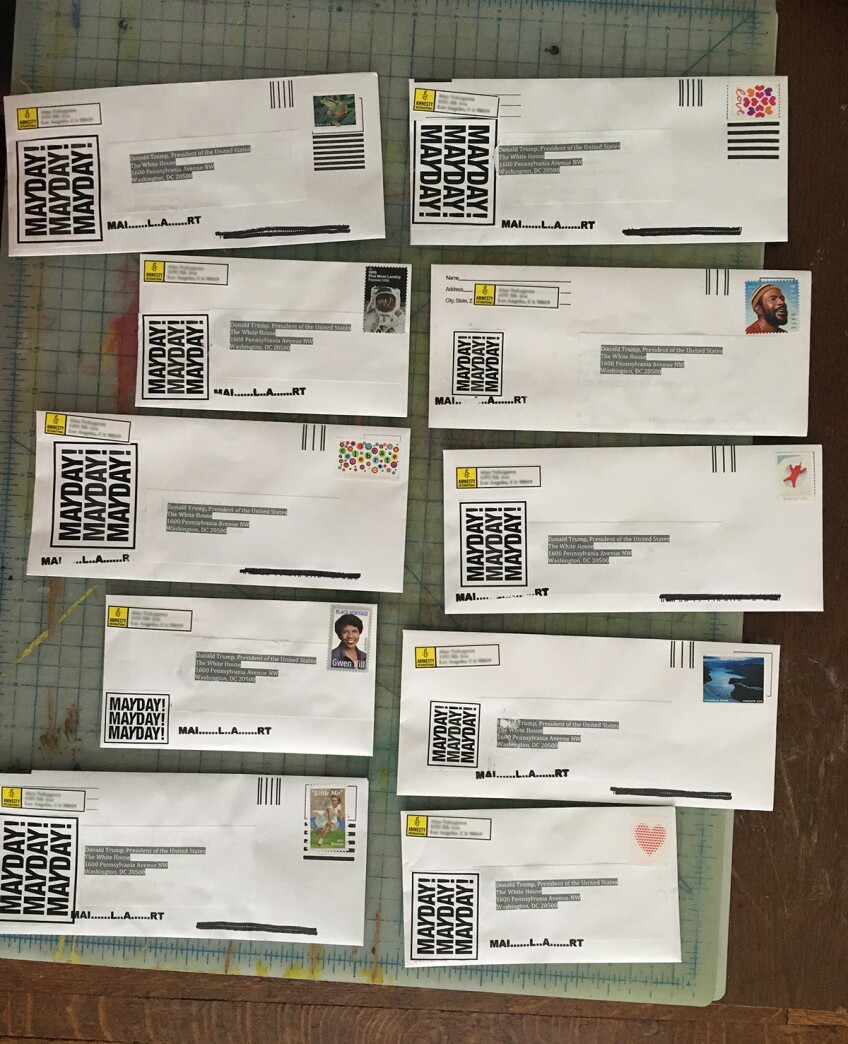

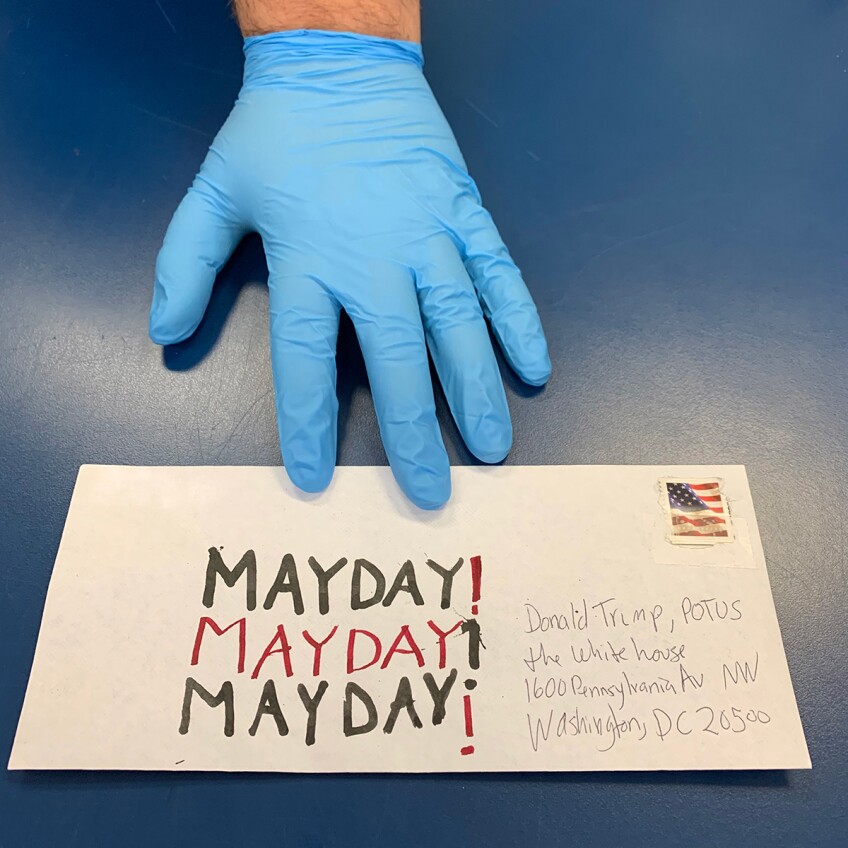

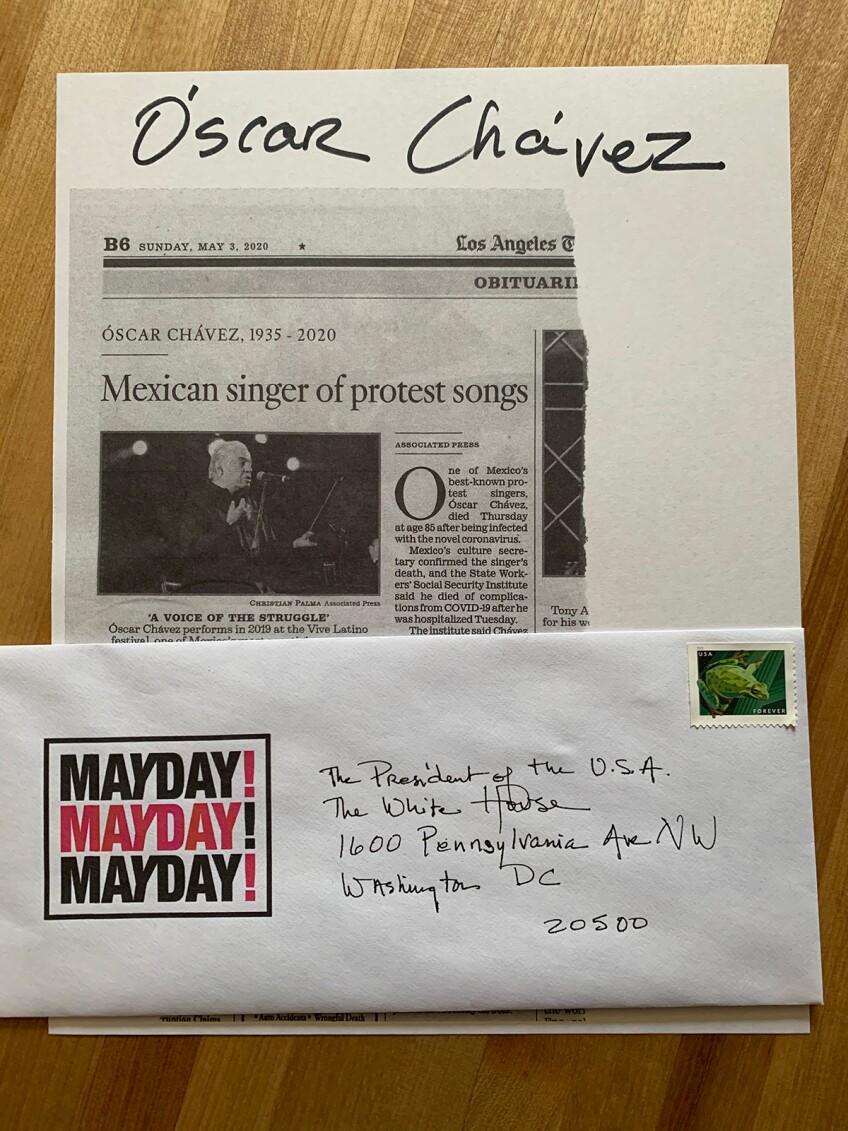

Silton considers the memorial, which will exist in perpetuity, “a different kind of wall,” she said. “And my hope is that it is a wall that towers over the wall that Trump claims to be building against immigrants.” She likens it to the New York Times’ May 24 front page featuring the names of 100,000 COVID-19 victims. The paper called the number of people killed by the coronavirus an “incalculable loss.” Silton said she was amazed after seeing that front page, which laid out the facts in a simple but powerful way. She wants the “Mayday!” project to have a similar effect on viewers.
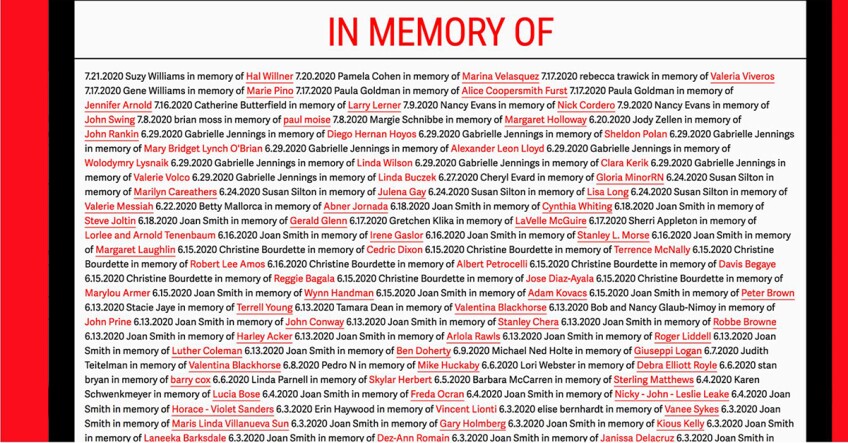
Two of her friends — writer Louise Steinman and artist Alan Hiroshi Nakagawa — took part in the project because they share Silton’s concerns about COVID-19 and the Trump administration.
“With a stamp and an envelope I could express my indignation at the pandemic’s toll and our government’s handling of it,” Steinman said. “I honored Andrea Circle Bear, the first federal prisoner to die in custody of COVID — two weeks after giving birth on a ventilator at a prison hospital in South Dakota.”
She also honored Maurice Berger, a cultural critic and race theorist whose work she appreciates and whose husband she knows. Steinman didn’t realize that hundreds of people had participated in the memorial until she visited the “Mayday!” website. After that, her involvement felt like both an individual and collective gesture of protest. It also felt multilayered, necessitating that one take part in the mundane act of mailing a letter and the sacred act of honoring the dead.
Nakagawa commemorated the lives of 12 people for the “Mayday!” project — Los Angeles locals, fellow Asian Americans and a friend’s father taken by the virus. He later posted photos of the envelopes he sent on Facebook.
“I’m of the general opinion that everything and anything this administration has handled has not gone well,” he said. “COVID is one of many, many things that has really been horrible to watch and embarrassing to watch as an American in the past four years.”
Moreover, as a Japanese American with family abroad, he fears that cuts to the Postal Service will make it harder for him to send packages to Japan and for his overseas relatives to send mail to the U.S.
The Postal Service has been “beleaguered for decades,” Silton said. “Republicans have notoriously politicized the Postal Service. And, last year, Trump began to attack it primarily because of Amazon, because at the helm of Amazon is his nemesis [CEO Jeff] Bezos. And that was what he was attacking at that point because Amazon has had an ongoing relationship with the Postal Service.
As the pandemic leads more Americans to vote by mail, the president has also implicated the Postal Service in any Election Day fraud that may take place in November. But Silton doesn’t believe voter fraud, which is a rare occurrence, is Trump’s biggest issue with the agency. It’s that the Postal Service plays a vital role in helping the public engage in their civic duty, she said.
“It is the one place that every American citizen can register their desire politically,” Silton said. “That is a fact. One American equals one vote. The Postal Service is an easy target for attack and for suppressing the vote.”
A political undercurrent has always run through Silton’s work, she said, but it has become more explicit over the past four years. So much has unfolded during the Trump administration that she felt as if she had no choice but to respond to these events in her art.
“I have to keep sane, and the only way I understand how to keep sane is by making work about it and responding to it,” she said. “And, in some cases, when I'm lucky, it's a participatory project like this one that allows for broad audiences to also respond.”
Top Image: A detail of Susan Silton's "Mayday! Mayday! Mayday!" project, which memorializes the victims of COVID-19. View the full memorial here. | Courtesy of Susan Silton





